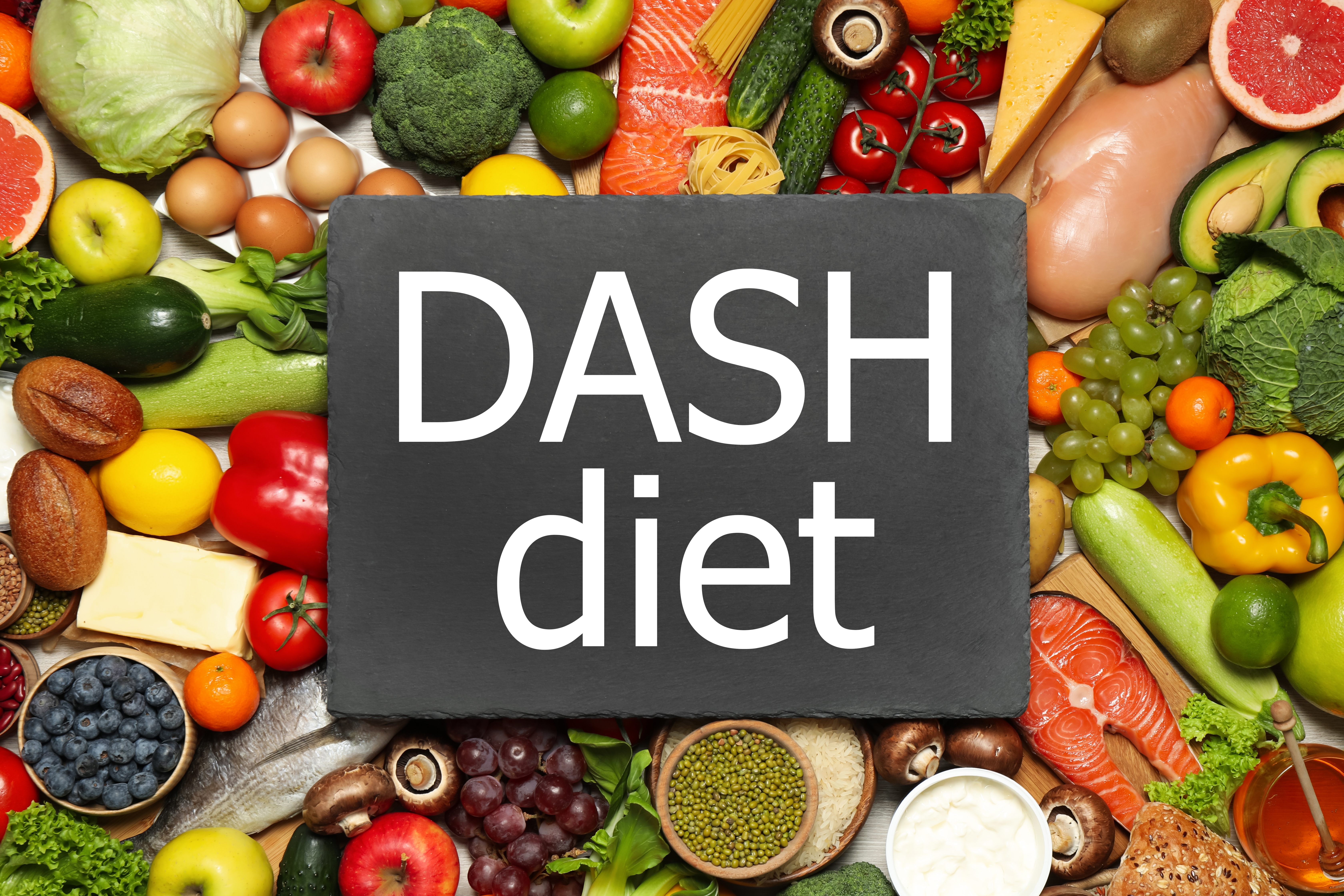
Dash Diet: Benefits, Guidelines, and Meal Plans
DASH stands for Dietary Approaches to Stop Hypertension. This DASH diet is suitable for individuals with hypertension. Wondering how to implement this eating pattern? Find out the complete explanation below, shall we?
What is DASH Diet?
True to its name, this dietary program is a healthy eating pattern recommended to help reduce the risk of hypertension (high blood pressure).
For those already experiencing hypertension, the DASH diet can help lower or control high blood pressure. Thus, symptoms and the risk of hypertension recurrence become lower even without medication.
The DASH diet itself gained attention after researchers realized that individuals following vegan and vegetarian lifestyles were less prone to hypertension.
Therefore, this diet emphasizes a healthy eating pattern based on fruits, vegetables, whole grains, lean meats, and healthy fats.
Meanwhile, intake of salt (sodium), sugar, artificial sweeteners, unhealthy fats, caffeine, and alcohol is greatly restricted.
Benefits of DASH Diet
In addition to helping control blood pressure, this eating pattern also offers several other benefits such as aiding in weight management and reducing the risk of heart attacks.
Here's further explanation about the benefits of the DASH diet:
1. Lowering Blood Pressure
In most cases, hypertension is influenced by habits of consuming excessive amounts of salty and fatty foods.
Hence, the DASH diet with its significant salt intake restriction , which significantly restricts salt intake in its rules, can help individuals lower and control their blood pressure.
2. Aiding in Weight Management
When done correctly, you will indirectly lose some of your weight under the DASH diet. following the DASH diet correctly, your weight will usually decrease indirectly. This is because the foods consumed tend to be low in calories and sugars.
Moreover, a study published by the National Library of Medicine shows that the DASH diet, when accompanied by exercise, not only lowers blood pressure to a greater extent but also improves vascular function, autonomic nervous system function, and reduces left ventricular mass.
3. Reducing Heart Attack Risk
According to research published by Science Direct, the healthy eating pattern in the DASH diet helps reduce the intake of total fat, saturated fat, and harmful cholesterol into the body.
This helps the body reduce insulin resistance, leading to lower blood sugar levels and a lower lipid profile. Thus, the risk of cardiovascular diseases also decreases.
4. Reducing Diabetes Risk
Interestingly, the DASH diet is one of the eating patterns well-received by individuals with type 2 diabetes.
Not only one can better control blood pressure, Because, aside from being able to control blood pressure, this healthy eating pattern has also been proven to decreaseincrease insulin resistance, thus reducing blood sugar levels by up to 29%.
For those who have not yet developed type 2 diabetes, the DASH diet can help prevent it.
5. Reducing the Risk of Cancer
According to Healthline, the foods limited in consumption in the DASH diet are cancer-triggering foods. Meanwhile, the foods recommended in this diet contain many anti-cancer properties.
Therefore, this healthy eating pattern can help you reduce the risk of cancer in the future. This includes colorectal cancer and breast cancer.
DASH Diet Guidelines
Actually, there are two types of DASH diets that can be followed, namely:
- Standard DASH diet, the maximum daily salt intake is 2300 mg per day.
- Low-sodium DASH diet, the maximum daily salt intake is 1500 mg per day.
To determine which DASH diet is most suitable for your body condition, it is advisable to consult with a Nutritionist first.
Furthermore, to establish good eating habits, you are advised to follow this diet for a full year.
For meal frequency, continue to eat three times a day. Ensure that your daily calorie intake is 2000 kcal per day so that you can maintain sufficient energy for your activities.
Additionally, here are the guidelines from the Ministry of Health of the Republic of Indonesia that need to be considered when implementing DASH:
- Replace white rice with brown rice.
- Replace white bread with whole grain bread. Consume without adding butter, cheese, chocolate, or high-sugar fruit spreads.
- If you want to consume pasta, choose whole grain pasta.
- Consumption of whole grain foods is recommended at 6-8 servings (1 serving is 1 tablespoon) per day.
- Consume vegetables and fruits at 4-5 servings per day.
- Choose vegetables and fruits that are high in magnesium and potassium.
- Consume vegetables and fruits as snacks. It is recommended at 11 a.m., 1 p.m., and 5 p.m.
- It is recommended not to peel edible fruit skins, such as apple and pear skins, because they contain many nutrients.
- It is recommended to consume fresh vegetables rather than frozen vegetables.
- Consumption of low-fat milk and dairy products is recommended at 2-3 servings per day. It is important for the fulfillment of vitamin D and protein.
- It is recommended to consume red meat, poultry, and fish up to 6 servings per day.
- Consume red meat and poultry without skin as these parts are high in fat.
- Avoid frying meat, poultry, and fish. Preferably, cook them by steaming, boiling, or grilling.
- Choose fish rich in essential omega-3 fatty acids to help reduce cholesterol in the body. Examples include tuna, salmon, or mackerel.
- The intake of fats and oils should be limited to 2-3 servings per day.
- It is recommended to consume only low-sugar or sugar-free sweet foods. Maximum of 5 servings per week.
- Avoid foods and drinks containing artificial sweeteners. Always check the nutritional value label on the packaging before consuming them.
- It is recommended to choose plain water as the main drink.
- It is recommended to consume nuts, grains, and legumes at 4-5 servings per week.
DASH Diet Menu Recommendations
If you're considering adopting this healthy eating pattern, we have sample menus that you can implement at home. These meal plans are adapted from the Mayo Clinic. The calorie content and other essential nutrients have been measured carefully. Thus, your daily intake can be well-balanced.
1. First Day Menu
Breakfast:
- 1 cup of unsalted oatmeal.
- ¼ cup of raisins.
- 1 medium-sized banana.
- 1 cup of low-fat milk.
- A cup of coffee, tea, or plain water.
Lunch:
- ½ cup of hummus.
- ½ medium-sized red bell pepper.
- ½ medium-sized cucumber.
- 10 small-sized carrots.
- 3 medium-sized falafel patties (choose those with a diameter of about 5 cm).
- 1 pita bread.
- Simply plain water for drinking.
Dinner:
- 113 grams of grilled salmon with maple balsamic glaze dressing.
- 1 cup of whole grain and wild rice blend.
- ¾ cup of green beans with red bell pepper.
- ½ cup of sliced pears.
- A cup of sugar-free tea, either hot or cold.
Snacks (Consumed between main meals):
- 1 cup of low-fat yogurt.
- 1 medium-sized peach.
2. Second Day Menu
Breakfast:
- 1 cup of mixed fruits, such as melon and grapes.
- ½ whole grain bagel.
- 1 tablespoon of unsweetened peanut butter.
- 1 cup of skim milk.
- A cup of coffee, tea, or plain water.
Lunch:
Spinach salad with whole grain bread.
- 3 cups of green spinach.
- 1 pear.
- ½ cup of oranges.
- 1 tablespoon of red wine vinegar.
- 1 tablespoon of olive oil.
- 28 grams of goat cheese.
- 85 grams of skinless chicken. Ensure it is thoroughly cooked.
Side dish.
- 1 whole grain bread.
- Plain water for the drink.
Dinner:
Vegetarian pasta.
- ½ cup of marinara sauce.
- 1 cup of butternut squash.
- ½ cup of chopped spinach.
- 1 ½ cup of whole grain pasta.
Side dish.
- 1 cup of melon as fruit intake.
- 1 cup of skim milk.
Snacks (Consumed between main meals):
- ¼ cup of unsalted trail mix (a mix of nuts, seeds, and dried fruits).
3. Third Day Menu
Breakfast:
Avocado toast.
- 1 medium-sized avocado.
- ¼ cup of tomatoes.
- 1 soft-boiled egg. Choose pasteurized eggs.
- 1 slice of whole grain toast.
Side dish.
- 1 medium-sized orange.
- Coffee, tea, or plain water.
Lunch:
Tuna salad on crackers.
- 85 grams of tuna.
- ¼ cup of chopped onions.
- ¼ cup of chopped red bell pepper.
- ¼ cup of chopped celery.
- 1 tablespoon of low-fat mayonnaise.
- 8 whole grain crackers.
Side dish.
- 1 medium-sized apple.
- ½ cup of skim milk.
Dinner:
Stir-fried vegetables.
- ½ tablespoon of sesame oil.
- ½ cup of thinly sliced onions.
- ½ cup of chopped red bell pepper.
- ½ cup of sliced button mushrooms.
- ½ cup of thinly sliced carrots.
- ½ teaspoon of minced ginger.
- ½ teaspoon of minced garlic.
- ½ teaspoon of mirin.
- ½ teaspoon of low-sodium soy sauce.
- ½ teaspoon of chopped cashews.
Side dish.
- Brown rice.
- Low-fat unsweetened yogurt.
- Drink water only.
Snacks (Consumed between main meals):
- 1 peach.
- ½ cup of unsalted almonds or plain-flavored.
It would be better if you consult with a nutritionist who is experienced in managing a hypertension lifestyle prior to changing your eating habits.
And while in Bali, spare your time to visit Arunika Resto restaurant at The Meru which offers a variety of wellness cuisines and traditional healthy drinks made fresh from organic ingredients.
At Arunika, you can relax and eat while enjoying direct views of Sanur beach which soothe your soul.
Related Articles

Before undergoing a surgical procedure, it is essential to make thorough preparations. You need to ensure ...

Bali has long been known as a paradise for yoga enthusiasts. Here are 10 yoga retreat ...

The Sanur Health Special Economic Zone (SEZ), the first of its kind, offers a variety of ...

